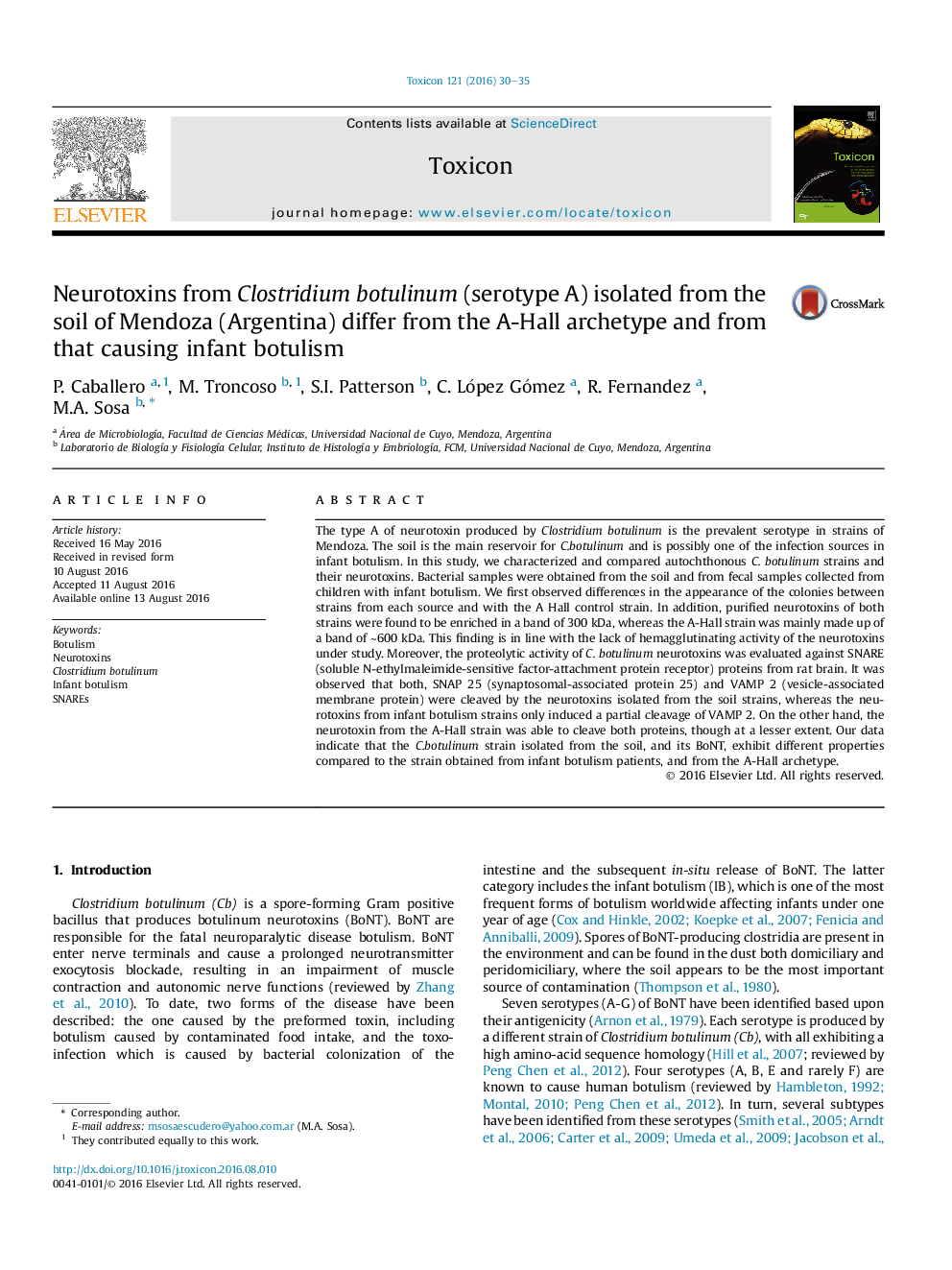| کد مقاله | کد نشریه | سال انتشار | مقاله انگلیسی | نسخه تمام متن |
|---|---|---|---|---|
| 2063948 | 1544115 | 2016 | 6 صفحه PDF | دانلود رایگان |
• Native strains of Clostridium botulinum were isolated from soil or infant botulism feces and studied comparatively.
• The neurotoxins purified from these strains are similar at molecular level but different than that of A-Hall strain.
• The neurotoxin from soil Clostridium botulinum showed to be more potent than that from infant botulism.
• The neurotoxins from both strains can cleave SNARE proteins differentially.
The type A of neurotoxin produced by Clostridium botulinum is the prevalent serotype in strains of Mendoza. The soil is the main reservoir for C.botulinum and is possibly one of the infection sources in infant botulism. In this study, we characterized and compared autochthonous C. botulinum strains and their neurotoxins. Bacterial samples were obtained from the soil and from fecal samples collected from children with infant botulism. We first observed differences in the appearance of the colonies between strains from each source and with the A Hall control strain. In addition, purified neurotoxins of both strains were found to be enriched in a band of 300 kDa, whereas the A-Hall strain was mainly made up of a band of ∼600 kDa. This finding is in line with the lack of hemagglutinating activity of the neurotoxins under study. Moreover, the proteolytic activity of C. botulinum neurotoxins was evaluated against SNARE (soluble N-ethylmaleimide-sensitive factor-attachment protein receptor) proteins from rat brain. It was observed that both, SNAP 25 (synaptosomal-associated protein 25) and VAMP 2 (vesicle-associated membrane protein) were cleaved by the neurotoxins isolated from the soil strains, whereas the neurotoxins from infant botulism strains only induced a partial cleavage of VAMP 2. On the other hand, the neurotoxin from the A-Hall strain was able to cleave both proteins, though at a lesser extent. Our data indicate that the C.botulinum strain isolated from the soil, and its BoNT, exhibit different properties compared to the strain obtained from infant botulism patients, and from the A-Hall archetype.
Journal: Toxicon - Volume 121, October 2016, Pages 30–35
